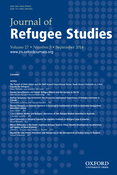-
Views
-
Cite
Cite
Brent Ranalli, Local Currencies: A Potential Solution for Liquidity Problems in Refugee Camp Economies, Journal of Refugee Studies, Volume 27, Issue 3, September 2014, Pages 422–433, https://doi.org/10.1093/jrs/fet049
Close - Share Icon Share
Abstract
Refugee camps typically suffer from inadequate means of exchange: hard currency is scarce and quickly finds its way out of the community. In such situations, local demand that could be met with local resources goes unmet. This article evaluates local currencies (also known as community or complementary currencies) as a policy instrument available to address this problem. A local currency fosters economic activity and generates employment by ensuring that a baseline of local demand is met by local supply. A local currency also fosters local pride and has the potential to strengthen ties between a refugee camp and the surrounding host community. The article distinguishes two broad categories of local currency that may have applicability in refugee camps, and presents relevant case studies (examples of local currencies implemented at a Dutch resettlement camp and in the slums of Mombasa, together with a discussion of the increasingly popular use of fresh food vouchers at refugee camps). A full-fledged local currency project of the kind described here has not yet been attempted at a refugee camp in the developing world. The article closes with a list of questions and considerations for practitioners who may wish to undertake the experiment.


